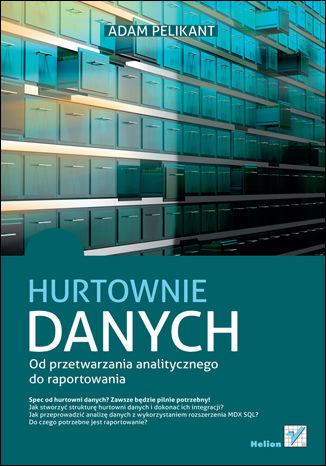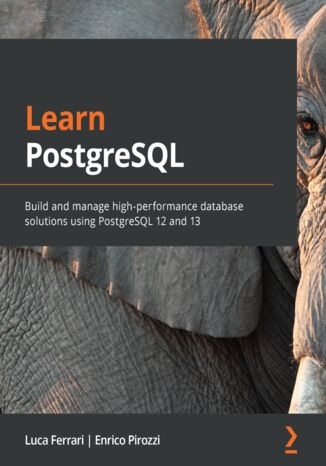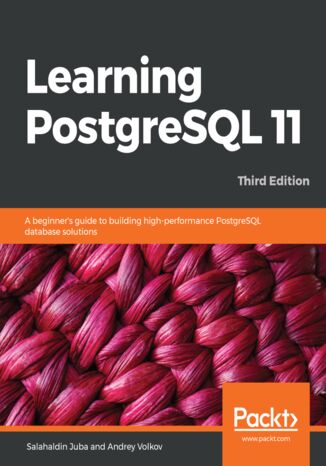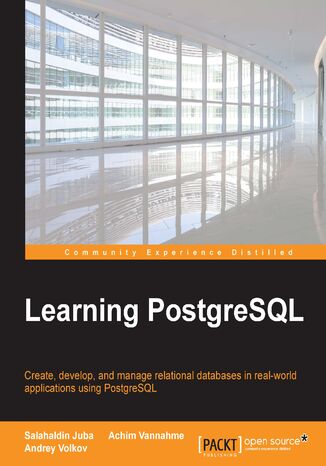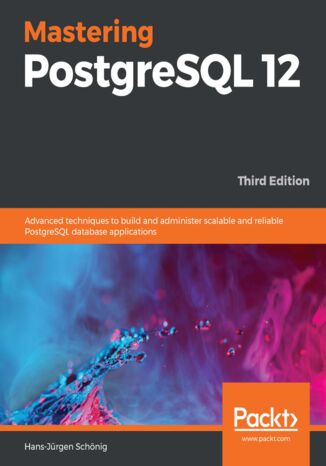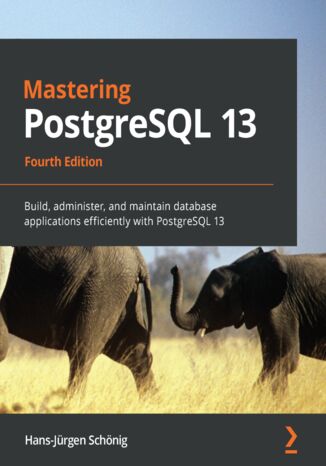Kategorie
Ebooki
-
Biznes i ekonomia
- Bitcoin
- Bizneswoman
- Coaching
- Controlling
- E-biznes
- Ekonomia
- Finanse
- Giełda i inwestycje
- Kompetencje osobiste
- Komputer w biurze
- Komunikacja i negocjacje
- Mała firma
- Marketing
- Motywacja
- Multimedialne szkolenia
- Nieruchomości
- Perswazja i NLP
- Podatki
- Polityka społeczna
- Poradniki
- Prezentacje
- Przywództwo
- Public Relation
- Raporty, analizy
- Sekret
- Social Media
- Sprzedaż
- Start-up
- Twoja kariera
- Zarządzanie
- Zarządzanie projektami
- Zasoby ludzkie (HR)
-
Dla dzieci
-
Dla młodzieży
-
Edukacja
-
Encyklopedie, słowniki
-
E-prasa
- Architektura i wnętrza
- Biznes i Ekonomia
- Dom i ogród
- E-Biznes
- Finanse
- Finanse osobiste
- Firma
- Fotografia
- Informatyka
- Kadry i płace
- Komputery, Excel
- Księgowość
- Kultura i literatura
- Naukowe i akademickie
- Ochrona środowiska
- Opiniotwórcze
- Oświata
- Podatki
- Podróże
- Psychologia
- Religia
- Rolnictwo
- Rynek książki i prasy
- Transport i Spedycja
- Zdrowie i uroda
-
Historia
-
Informatyka
- Aplikacje biurowe
- Bazy danych
- Bioinformatyka
- Biznes IT
- CAD/CAM
- Digital Lifestyle
- DTP
- Elektronika
- Fotografia cyfrowa
- Grafika komputerowa
- Gry
- Hacking
- Hardware
- IT w ekonomii
- Pakiety naukowe
- Podręczniki szkolne
- Podstawy komputera
- Programowanie
- Programowanie mobilne
- Serwery internetowe
- Sieci komputerowe
- Start-up
- Systemy operacyjne
- Sztuczna inteligencja
- Technologia dla dzieci
- Webmasterstwo
-
Inne
-
Języki obce
-
Kultura i sztuka
-
Lektury szkolne
-
Literatura
- Antologie
- Ballada
- Biografie i autobiografie
- Dla dorosłych
- Dramat
- Dzienniki, pamiętniki, listy
- Epos, epopeja
- Esej
- Fantastyka i science-fiction
- Felietony
- Fikcja
- Humor, satyra
- Inne
- Klasyczna
- Kryminał
- Literatura faktu
- Literatura piękna
- Mity i legendy
- Nobliści
- Nowele
- Obyczajowa
- Okultyzm i magia
- Opowiadania
- Pamiętniki
- Podróże
- Poemat
- Poezja
- Polityka
- Popularnonaukowa
- Powieść
- Powieść historyczna
- Proza
- Przygodowa
- Publicystyka
- Reportaż
- Romans i literatura obyczajowa
- Sensacja
- Thriller, Horror
- Wywiady i wspomnienia
-
Nauki przyrodnicze
-
Nauki społeczne
-
Podręczniki szkolne
-
Popularnonaukowe i akademickie
- Archeologia
- Bibliotekoznawstwo
- Filmoznawstwo
- Filologia
- Filologia polska
- Filozofia
- Finanse i bankowość
- Geografia
- Gospodarka
- Handel. Gospodarka światowa
- Historia i archeologia
- Historia sztuki i architektury
- Kulturoznawstwo
- Lingwistyka
- Literaturoznawstwo
- Logistyka
- Matematyka
- Medycyna
- Nauki humanistyczne
- Pedagogika
- Pomoce naukowe
- Popularnonaukowa
- Pozostałe
- Psychologia
- Socjologia
- Teatrologia
- Teologia
- Teorie i nauki ekonomiczne
- Transport i spedycja
- Wychowanie fizyczne
- Zarządzanie i marketing
-
Poradniki
-
Poradniki do gier
-
Poradniki zawodowe i specjalistyczne
-
Prawo
- BHP
- Historia
- Kodeks drogowy. Prawo jazdy
- Nauki prawne
- Ochrona zdrowia
- Ogólne, kompendium wiedzy
- Podręczniki akademickie
- Pozostałe
- Prawo budowlane i lokalowe
- Prawo cywilne
- Prawo finansowe
- Prawo gospodarcze
- Prawo gospodarcze i handlowe
- Prawo karne
- Prawo karne. Przestępstwa karne. Kryminologia
- Prawo międzynarodowe
- Prawo międzynarodowe i zagraniczne
- Prawo ochrony zdrowia
- Prawo oświatowe
- Prawo podatkowe
- Prawo pracy i ubezpieczeń społecznych
- Prawo publiczne, konstytucyjne i administracyjne
- Prawo rodzinne i opiekuńcze
- Prawo rolne
- Prawo socjalne, prawo pracy
- Prawo Unii Europejskiej
- Przemysł
- Rolne i ochrona środowiska
- Słowniki i encyklopedie
- Zamówienia publiczne
- Zarządzanie
-
Przewodniki i podróże
- Afryka
- Albumy
- Ameryka Południowa
- Ameryka Środkowa i Północna
- Australia, Nowa Zelandia, Oceania
- Austria
- Azja
- Bałkany
- Bliski Wschód
- Bułgaria
- Chiny
- Chorwacja
- Czechy
- Dania
- Egipt
- Europa
- Francja
- Góry
- Grecja
- Hiszpania
- Holandia
- Islandia
- Litwa
- Mapy, Plany miast, Atlasy
- Miniprzewodniki
- Niemcy
- Norwegia
- Podróże aktywne
- Polska
- Portugalia
- Pozostałe
- Rosja
- Rumunia
- Słowacja
- Słowenia
- Szwajcaria
- Szwecja
- Świat
- Turcja
- Ukraina
- Węgry
- Wielka Brytania
- Włochy
-
Psychologia
- Filozofie życiowe
- Kompetencje psychospołeczne
- Komunikacja międzyludzka
- Mindfulness
- Ogólne
- Perswazja i NLP
- Psychologia akademicka
- Psychologia duszy i umysłu
- Psychologia pracy
- Relacje i związki
- Rodzicielstwo i psychologia dziecka
- Rozwiązywanie problemów
- Rozwój intelektualny
- Sekret
- Seksualność
- Uwodzenie
- Wygląd i wizerunek
- Życiowe filozofie
-
Religia
-
Sport, fitness, diety
-
Technika i mechanika
Audiobooki
-
Biznes i ekonomia
- Bitcoin
- Bizneswoman
- Coaching
- Controlling
- E-biznes
- Ekonomia
- Finanse
- Giełda i inwestycje
- Kompetencje osobiste
- Komunikacja i negocjacje
- Mała firma
- Marketing
- Motywacja
- Nieruchomości
- Perswazja i NLP
- Podatki
- Poradniki
- Prezentacje
- Przywództwo
- Public Relation
- Sekret
- Social Media
- Sprzedaż
- Start-up
- Twoja kariera
- Zarządzanie
- Zarządzanie projektami
- Zasoby ludzkie (HR)
-
Dla dzieci
-
Dla młodzieży
-
Edukacja
-
Encyklopedie, słowniki
-
Historia
-
Informatyka
-
Inne
-
Języki obce
-
Kultura i sztuka
-
Lektury szkolne
-
Literatura
- Antologie
- Ballada
- Biografie i autobiografie
- Dla dorosłych
- Dramat
- Dzienniki, pamiętniki, listy
- Epos, epopeja
- Esej
- Fantastyka i science-fiction
- Felietony
- Fikcja
- Humor, satyra
- Inne
- Klasyczna
- Kryminał
- Literatura faktu
- Literatura piękna
- Mity i legendy
- Nobliści
- Nowele
- Obyczajowa
- Okultyzm i magia
- Opowiadania
- Pamiętniki
- Podróże
- Poezja
- Polityka
- Popularnonaukowa
- Powieść
- Powieść historyczna
- Proza
- Przygodowa
- Publicystyka
- Reportaż
- Romans i literatura obyczajowa
- Sensacja
- Thriller, Horror
- Wywiady i wspomnienia
-
Nauki przyrodnicze
-
Nauki społeczne
-
Popularnonaukowe i akademickie
-
Poradniki
-
Poradniki zawodowe i specjalistyczne
-
Prawo
-
Przewodniki i podróże
-
Psychologia
- Filozofie życiowe
- Komunikacja międzyludzka
- Mindfulness
- Ogólne
- Perswazja i NLP
- Psychologia akademicka
- Psychologia duszy i umysłu
- Psychologia pracy
- Relacje i związki
- Rodzicielstwo i psychologia dziecka
- Rozwiązywanie problemów
- Rozwój intelektualny
- Sekret
- Seksualność
- Uwodzenie
- Wygląd i wizerunek
- Życiowe filozofie
-
Religia
-
Sport, fitness, diety
-
Technika i mechanika
Kursy video
-
Bazy danych
-
Big Data
-
Biznes i ekonomia
-
Cyberbezpieczeństwo
-
Data Science
-
DevOps
-
Dla dzieci
-
Elektronika
-
Grafika/Wideo/CAX
-
Gry
-
Microsoft Office
-
Narzędzia programistyczne
-
Programowanie
-
Rozwój osobisty
-
Sieci komputerowe
-
Systemy operacyjne
-
Testowanie oprogramowania
-
Urządzenia mobilne
-
UX/UI
-
Web development
Podcasty
- Ebooki
- Bazy danych
- PostgreSQL
PostgreSQL
Zobacz, jakie to proste -- naucz się tworzyć bazy danych! Jak tworzyć formularze i raporty? Jak modyfikować strukturę tabel? Jak stosować mechanizmy wymiany danych? Współczesny świat wymusza na przedsiębiorstwach gromadzenie oraz przetwarzanie ogromnej ilości informacji. To sprawia, że muszą one dysponować wydajnymi i sprawnymi bazami danych. Aby zbudować taki system zarządzania danymi, niezbędne są odpowiednie narzędzia -- jednym z nich jest program MS Access. Ta aplikacja przede wszystkim pozwala na łatwą kontrolę poprawności tworzonych projektów oraz zapewnia integrację narzędzi służących do tworzenia struktury relacyjnej. Dba także o zgodność tych narzędzi ze standardem języka zapytań SQL, wykorzystywanym do tworzenia i modyfikowania baz danych oraz operowania na zgromadzonych w nich informacjach. Książka "Bazy danych. Pierwsze starcie" stanowi doskonałe wprowadzenie w tematykę tworzenia baz danych. Zawiera wszystkie potrzebne informacje, podane w prosty i przejrzysty sposób. Ten podręcznik przyda się zarówno studentom kierunków informatycznych, jak i wszystkim tym, którzy chcą zdobyć wiedzę o nowoczesnych metodach budowania takich baz. Stąd dowiesz się m.in., jak wykorzystywać język zapytań SQL, w jaki sposób tworzyć tabele, formularze i raporty oraz stosować mechanizmy wymiany danych, a także na czym polega filtrowanie i sortowanie w zapytaniach. Zdobędziesz wiedzę i umiejętności wystarczające do samodzielnego zbudowania wydajnej bazy danych i sprawnego nią zarządzania. Projektowanie bazy danych -- narzędzia wizualne Tworzenie formularzy i raportów Strukturalny język zapytań SQL w wersji MS JetSQL Składnia podstawowa Unia -- koniunkcja zbiorów Grupowanie i funkcje agregujące Zastosowanie języka SQL z poziomu formularzy Mechanizmy wymiany danych Obiekty: DAO, RDO, ADO Zastosowanie mechanizmów wymiany danych przy tworzeniu aplikacji Stwórz własną, niezawodną bazę danych!
PostgreSQL is an open-source object-relational database management system (DBMS) that provides enterprise-level services, including high performance and scalability. This book is a collection of unique projects providing you with a wealth of information relating to administering, monitoring, and testing PostgreSQL. The focus of each project is on both the development and the administrative aspects of PostgreSQL.Starting by exploring development aspects such as database design and its implementation, you’ll then cover PostgreSQL administration by understanding PostgreSQL architecture, PostgreSQL performance, and high-availability clusters. Various PostgreSQL projects are explained through current technologies such as DevOps and cloud platforms using programming languages like Python and Node.js. Later, you’ll get to grips with the well-known database API tool, PostgREST, before learning how to use popular PostgreSQL database testing frameworks. The book is also packed with essential tips and tricks and common patterns for working seamlessly in a production environment. All the chapters will be explained with the help of a real-world case study on a small banking application for managing ATM locations in a city.By the end of this DBMS book, you’ll be proficient in building reliable database solutions as per your organization's needs.
Hurtownie danych. Od przetwarzania analitycznego do raportowania
Spec od hurtowni danych? Zawsze będzie pilnie potrzebny! Jak stworzyć strukturę hurtowni danych i dokonać ich integracji? Jak przeprowadzić analizę danych z wykorzystaniem rozszerzenia MDX SQL? Do czego potrzebne jest raportowanie? Idea hurtowni danych ściśle wiąże się z ich kolosalnymi ilościami, gromadzonymi podczas tysięcy różnych sytuacji — przy dowolnej transakcji, w urzędzie, na lotnisku, w internecie… Nawet nasze połączenia telefoniczne są przechowywane przez operatora. Te wszystkie dane trzeba gdzieś pomieścić, sensownie posegregować i zapewnić sobie możliwość sięgnięcia do wybranego ich zakresu bez długotrwałych poszukiwań. Taką możliwość dają właśnie hurtownie danych — przemyślane, bardzo pojemne bazy, oferujące zarówno integrację wprowadzanych danych, jak i znakomite mechanizmy ich przeszukiwania. Jeśli chcesz poszerzyć swoją wiedzę na temat tworzenia i przeglądania zawartości hurtowni danych, trafiłeś pod właściwy adres! Książka "Hurtownie danych. Od przetwarzania analitycznego do raportowania" zawiera materiał przeznaczony nie tylko dla studentów wydziałów informatycznych, ale także dla pasjonatów tej tematyki oraz specjalistów zainteresowanych poszerzeniem wiedzy. W możliwie najprostszy, praktyczny sposób opisano w niej składnię i postać zapytań analitycznych, strukturę hurtowni danych oraz kwestię ich integracji i wizualnego tworzenia elementów hurtowni. Znajdziesz tu także omówienie analizy danych z wykorzystaniem rozszerzenia MDX SQL oraz zastosowań raportowania. Zapoznanie się z tymi informacjami oraz prześledzenie zgromadzonych tu przykładów pozwoli Ci zrozumieć problemy powstające przy budowie hurtowni danych i wykorzystać tę wiedzę we własnych projektach. Zapytania analityczne Struktura hurtowni danych Integracja danych Wizualne tworzenie elementów hurtowni danych Analiza danych z wykorzystaniem rozszerzenia MDX SQL Raportowanie Od bazy do hurtowni danych… Skocz na głęboką wodę!
Learn PostgreSQL. Build and manage high-performance database solutions using PostgreSQL 12 and 13
PostgreSQL is one of the fastest-growing open source object-relational database management systems (DBMS) in the world. As well as being easy to use, it’s scalable and highly efficient. In this book, you’ll explore PostgreSQL 12 and 13 and learn how to build database solutions using it. Complete with hands-on tutorials, this guide will teach you how to achieve the right database design required for a reliable environment.You'll learn how to install and configure a PostgreSQL server and even manage users and connections. The book then progresses to key concepts of relational databases, before taking you through the Data Definition Language (DDL) and commonly used DDL commands. To build on your skills, you’ll understand how to interact with the live cluster, create database objects, and use tools to connect to the live cluster. You’ll then get to grips with creating tables, building indexes, and designing your database schema. Later, you'll explore the Data Manipulation Language (DML) and server-side programming capabilities of PostgreSQL using PL/pgSQL, before learning how to monitor, test, and troubleshoot your database application to ensure high-performance and reliability.By the end of this book, you'll be well-versed with the Postgres database and be able to set up your own PostgreSQL instance and use it to build robust solutions.
Salahaldin Juba, Andrey Volkov
PostgreSQL is one of the most popular open source database management systems in the world, and it supports advanced features included in SQL standards. This book will familiarize you with the latest features in PostgreSQL 11, and get you up and running with building efficient PostgreSQL database solutions from scratch.Learning PostgreSQL, 11 begins by covering the concepts of relational databases and their core principles. You’ll explore the Data Definition Language (DDL) and commonly used DDL commands supported by ANSI SQL. You’ll also learn how to create tables, define integrity constraints, build indexes, and set up views and other schema objects. As you advance, you’ll come to understand Data Manipulation Language (DML) and server-side programming capabilities using PL/pgSQL, giving you a robust background to develop, tune, test, and troubleshoot your database application. The book will guide you in exploring NoSQL capabilities and connecting to your database to manipulate data objects. You’ll get to grips with using data warehousing in analytical solutions and reports, and scaling the database for high availability and performance.By the end of this book, you’ll have gained a thorough understanding of PostgreSQL 11 and developed the necessary skills to build efficient database solutions.
Salahaldin Juba, Andrey Volkov, Salahaldin Juba, Achim Vannahme
PostgreSQL is one of the most powerful and easy to use database management systems. It supports the most advanced features included in SQL standards. The book starts with the introduction of relational databases with PostegreSQL. It then moves on to covering data definition language (DDL) with emphasis on PostgreSQL and common DDL commands supported by ANSI SQL. You will then learn the data manipulation language (DML), and advanced topics like locking and multi version concurrency control (MVCC). This will give you a very robust background to tune and troubleshoot your application. The book then covers the implementation of data models in the database such as creating tables, setting up integrity constraints, building indexes, defining views and other schema objects. Next, it will give you an overview about the NoSQL capabilities of PostgreSQL along with Hstore, XML, Json and arrays. Finally by the end of the book, you'll learn to use the JDBC driver and manipulate data objects in the Hibernate framework.
Thanks to its reliability, robustness, and high performance, PostgreSQL has become the most advanced open source database on the market. This third edition of Mastering PostgreSQL helps you build dynamic database solutions for enterprise applications using the latest release of PostgreSQL, which enables database analysts to design both physical and technical aspects of system architecture with ease.Starting with an introduction to the newly released features in PostgreSQL 12, this book will help you build efficient and fault-tolerant PostgreSQL applications. You’ll thoroughly examine the advanced features of PostgreSQL, including logical replication, database clusters, performance tuning, monitoring, and user management. You’ll also work with the PostgreSQL optimizer, configure PostgreSQL for high speed, and understand how to move from Oracle to PostgreSQL. As you progress through the chapters, you’ll cover transactions, locking, indexes, and how to optimize queries for improved performance. Additionally, you’ll learn how to manage network security and explore backups and replications while understanding useful PostgreSQL extensions to help you in optimizing the performance of large databases.By the end of this PostgreSQL book, you’ll be able to get the most out of your database by implementing advanced administrative tasks effortlessly.
Thanks to its reliability, robustness, and high performance, PostgreSQL has become one of the most advanced open source databases on the market. This updated fourth edition will help you understand PostgreSQL administration and how to build dynamic database solutions for enterprise apps with the latest release of PostgreSQL, including designing both physical and technical aspects of the system architecture with ease.Starting with an introduction to the new features in PostgreSQL 13, this book will guide you in building efficient and fault-tolerant PostgreSQL apps. You’ll explore advanced PostgreSQL features, such as logical replication, database clusters, performance tuning, advanced indexing, monitoring, and user management, to manage and maintain your database. You’ll then work with the PostgreSQL optimizer, configure PostgreSQL for high speed, and move from Oracle to PostgreSQL. The book also covers transactions, locking, and indexes, and shows you how to improve performance with query optimization. You’ll also focus on how to manage network security and work with backups and replication while exploring useful PostgreSQL extensions that optimize the performance of large databases.By the end of this PostgreSQL book, you’ll be able to get the most out of your database by executing advanced administrative tasks.



